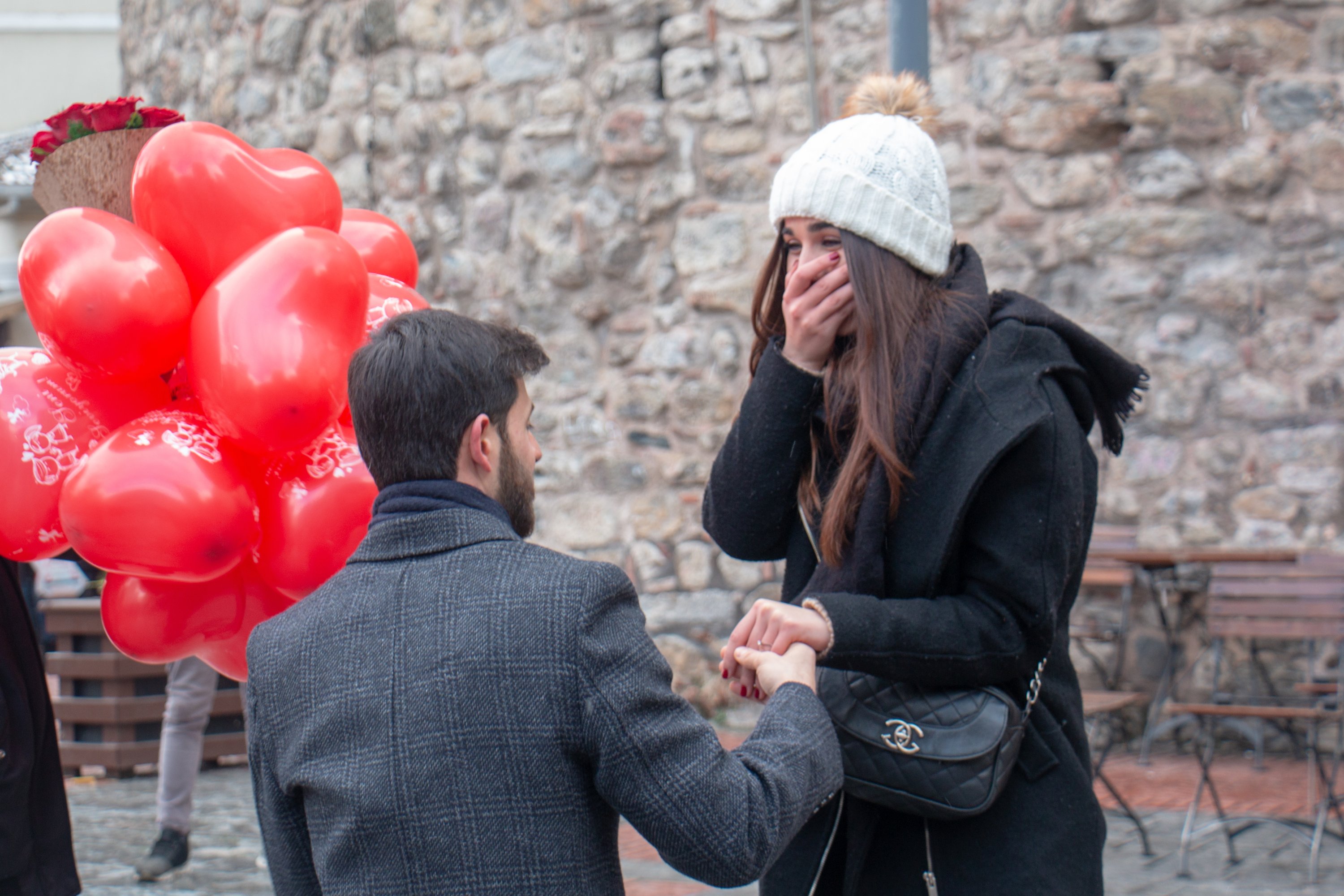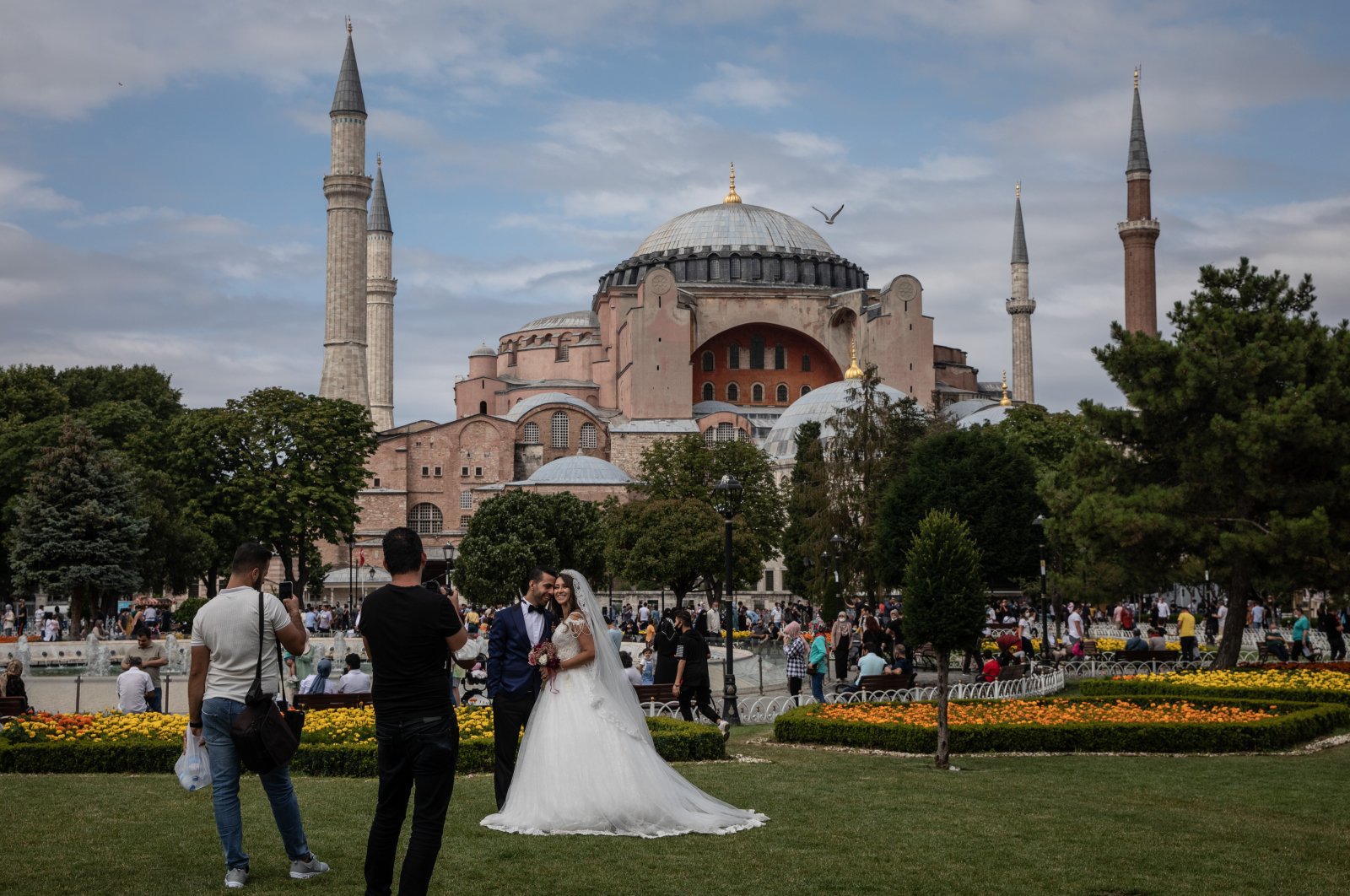In Turkey, the months of August and September have always been the most popular time for weddings. The tying of the knot is steeped in tradition, can take days and is of course a big task!
Traditional weddings in Turkey that stretch over several days, especially in rural areas, are associated with a long list of customs, traditions and superstitions that may seem strange to the stranger. Hence, here is a guide for foreigners to Turkish wedding rituals:
Timing is everything
In Turkey, as in many countries, the summer months are considered the optimal time for a wedding, with August and September being the preferred months.
This is especially true when the two most important national and religious holidays, namely Ramadan Bayram, also known as Eid al-Fitr, and Qurban Bayram, or Eid al-Adha, also fall in the summer months, as this year.
There has long been a superstition that weddings should not be held on the days between these two holidays, a time known as Shawwal, which is the 10th month of the Islamic calendar. It turns out, however, that this belief has nothing to do with religion and is actually rooted in a plague that occurred in the Middle East this month in pre-Islamic times. The superstition, which continues to this day, is based on the belief that this time of year is cursed and would cause unrest among couples who have decided to marry.
In fact, the Prophet Mohammed himself married his wife Aisha during Shawwal, and she is said to have recommended the time for weddings to other women in her circles.
While this superstition persists in some regions of Turkey to this day, the Turkish religious authority Diyanet confirms that this belief has no religious roots and that people are free to marry at any time of the year that they see fit.
However, as we leave the two Bayrams behind as August and September enter, prepare for the wedding season to be in full swing in the weeks ahead.
The Henna Night: Turkey’s “Henna Night”
The “kına gecesi” or henna night is an important ritual with tradition and customs that takes place a day or two before the wedding in the bride’s house and is only visited by women.
On this occasion, the bride wears a very special red dress or cape, which is usually decorated with gold embroidery, which is known as a “bindall”. The henna is supposed to be prepared by a happily married woman and a coin is placed in the mixture of colors, the meaning of which will become clear later.
Traditional henna night. (Shutterstock photo)
Once the henna is done, the bride sits in the center in a chair with a veil over her head, which is usually also red, a color meant to symbolize love and belonging. The ceremony begins with the elder leading the younger women in attendance in a ceremony where they hold candles in henna-filled copper bowls and walk around the bride singing traditional wedding songs.
The bride-to-be should be moved to tears and the traditional teardrop song “Yüksek yüksek tepeler”, a song about longing for family and home, is usually sufficient. As soon as the bride is moved to tears, the henna coloring can begin.
It is the job of the elder of the family to put a dollop of henna in the palm of the hand of the bride, but first the mother-in-law is supposed to give her a gold coin that is supposed to bring good luck. In fact, the bride is supposed to keep her fist closed until she does. After the henna has been applied, the bride’s hands are wrapped in a red cloth and the rest of the guests also receive henna stamps from the copper bowls carried around.
According to superstition, whoever finds the coin in the henna bowl, as mentioned earlier, will soon receive a marriage proposal. After the henna ceremony, the event continues, similar to the western “chicken evenings” with food, dancing and happiness among the women for the upcoming wedding of the host and the bride.
The belief behind the tradition is to guarantee the couple a long lasting love and to protect them from misfortune. Sources link this age-old practice in these countries with the history that also inspired the Festival of Sacrifice, with henna representing a sacrifice.
When it rains money
One of the most anticipated rituals at a Turkish wedding is the gold adornment ceremony, in which the newlyweds are addressed by friends and family who stick gold coins or bills on a sash worn by the newly married couple. On noisy occasions, crowds of people dancing can also throw money in the air.

A man proposes marriage to a woman next to the Galata Tower in Istanbul. (Shutterstock photo)
To make the first step
Turkey has a number of more recent customs that have often been adopted by other cultures, such as not allowing the groom to see his bride in her dress before the wedding as it is said to bring bad luck.
One of the most prominent superstitions associated with the moment after the “I dos” has to do with the bridal couple stepping on each other’s feet. Supposedly, whoever steps first has the last word in the marriage.
The shoes say it all
In addition to throwing a bouquet, a Turkish wedding offers a number of opportunities for female members of the wedding party to become next in line to get married.
One such custom is the practice of writing all the names of the single women of the wedding party on the underside of the bridal shoe. According to superstition, the first name that rubs off will soon get married.
The radiant bride
Another folkloric tradition in Turkey is that the bride is adorned with glittering tinsel, known as “gelin teli”. Your friends then choose the tinsel to find the shortest piece, since it is the next to get married.
The role of the groom
A traditional Turkish wedding, especially in rural areas, is also celebrated separately by the bride and groom’s families. At these wedding celebrations, the most traditional dish is keşkek, a stew-like dish made from wheat barley and chicken that is served at special ceremonies in Turkey. It is such an integral part of Turkish culture that it was added to UNESCO’s list of Intangible Cultural Heritage in 2011.
The dish is carefully prepared by the groom and his friends, who have to grind the barley in the days leading up to the wedding.
Plant the flag
The groom is also involved in a “flag planting ceremony” that takes place at dawn and initiates the entire wedding event. According to tradition, the male members of the wedding party attend a morning prayer ceremony and then set up a flag on the highest point near the newlyweds’ house. Almost all of these events are accompanied by the traditional Turkish instruments “Davul and Zurna”. The players are tasked with providing the soundtrack for each event.
To ride horses
Perhaps the most exciting wedding tradition in Turkey is that the bride is brought from her family home to her wedding home on horseback, along with a lively procession and a waving Turkish flag that is presented to the groom on arrival. Nowadays, some couples also decorate cars.

